#and still ongoing
Text
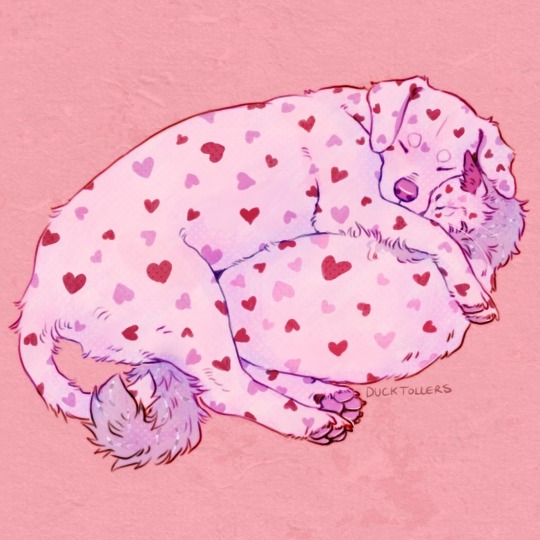
best friends
#valentines day#love puppy#love kitten#webkinz#digital art#id in alt text#my art#ik i said i would do raccoons again but i remembered ive been meaning to draw webkinz love puppy idk#this was mostly an excuse to experiment w brushes and textures. experiment failed i still hate them#my battle w procreate is ongoing 🔪#idk i feel like i should keep a tradition of valentines day drawings#HOPEFULLY now that school is done. maybe ill finally have the mental bandwidth to draw in october#which is way better than february 😑
4K notes
·
View notes
Text

There's a special pain that comes from not knowing how to make your long-snouted dog people kiss properly.
#no I still haven't figured it out#yes the research is ongoing#there's just too much snout#and teeth#and I absolutely refuse to give them any tiniest resemblance of lips to cushion their muzzles that's a hard limit#own art#own characters#CanisAlbus#Vasco#Machete#this far I've settled for one sided cheek/forehead/side of mouth kisses but it'd be nice to get the real deal damnit#there has to be a way
7K notes
·
View notes
Text
smth so good abt labru besides the obvious thing (narrative foils) is also the fact that laios is such an open book / wears his heart on his sleeve and honest down to earth guy that he just loops back around to being unpredictable . like the fuckin, “its not even a monster??” laios fav food reveal is such a funny bit because like . okay. its hilarious that kabru who’s whole thing is being able to read people super well and remember all these details abt them is just so utterly blind when it comes to laios. hes like shooting a dart everywhere and it hits the general direction but at the same time the trajectory is just so off because laios does something bizarre that kabru has to reorient his chart of “stuff abt laios touden” and scramble things around. its like a game. a flow chart of . whatever the fuck
basically Kabru, the guy who knows everything there is to know about everyone. V.S this enigma who isn’t even that mysterious just autistic and easily misunderstood
#its so damn funny#Kabrus LAIOS MANUAL (WIP) (Still Ongoing)#like of course the more he encounters him the more he starts to understand and like#Kabru constantly updates what he knows abt everyone and everything . he is the up to dater. for normal reasons#but its so funny to me that even tho the stuff laios does makes sense . to me. its still like hey man what was that. to kabru#im so good at wording things and this probably makes like only 80% of sense#it is late and i probably should sleep#dungeon meshi#kabru of utaya#laios touden#labru#theyre so hilarious to me . absurd people . i need them inside a printing press#a paper shredder. even
797 notes
·
View notes
Text

an autumn date~
(prints)
#my ocs ivy and willow from my (still ongoing) ivy comic#oc#ivy#willow#ivy comic mimimar#ivy comic#wlw#sapphic#lesbian#wlw art#sapphic art#lesbian art#artists on tumblr#autumn#fall#orange
2K notes
·
View notes
Text
DP x DC Prompt #14
When J'onn offered to go to the distress signal, alone, he wasn't sure what he was expecting. Other Leaguer's were on standby, of course, but J'onn didn't sense any danger. In fact it was almost ... suspiciously quiet.
That's why when he came across a child who was bleeding so much he shouldn't even be alive he was more than concerned. The kid just smiled at J'onn, made a pun, did some sort of ... dance move? And then promptly passed out.
J'onn suddenly understood how Batman had an "adoption addiction."
#finemeal prompt#dp x dc#j'onn j'onzz#danny fenton#i just love them your honor#i think j'onn and danny is untouched parental unit material#not completely untouched#there's a lot of great j'onn and danny stories out there#if anyone wants any rec's lemme know#i got a lot#i think one is still ongoing#and it has my entire heart
985 notes
·
View notes
Text


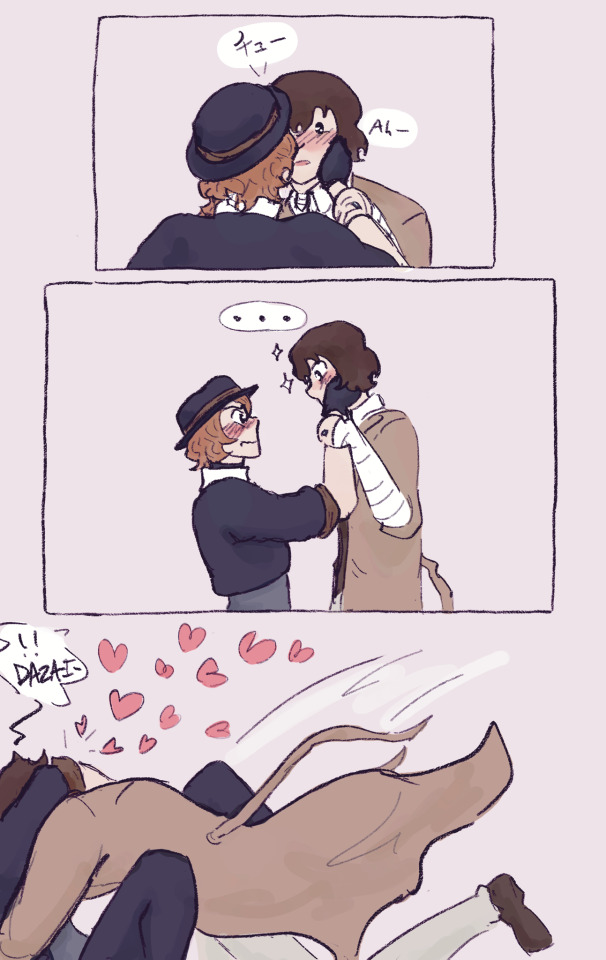
Breaking News: Local Married Couple Flirts In Very Weird Ways, Onlookers Baffled
#there’s only so much composure Chuuya can keep while saying sappy things#dazai has no such compunctions lol#also GREETINGS I LIVE#progress is still being made on the ongoing comic I have just given myself a lot to do this month#so it’s very slow going!#bsd#my art#bsd chuuya#bsd dazai#bungou stray dogs#soukoku#skk
2K notes
·
View notes
Text

She's a Lesbian, He's Gay, And Their 33-Year Marriage Will Change Your Perception Of Love
#George Rextrew you are impressively difficult to draw#ghost show brain rot is still ongoing#niko sasaki#yuyu kitamura#edwin payne#george rexstrew#dead boy detectives#my art
587 notes
·
View notes
Text

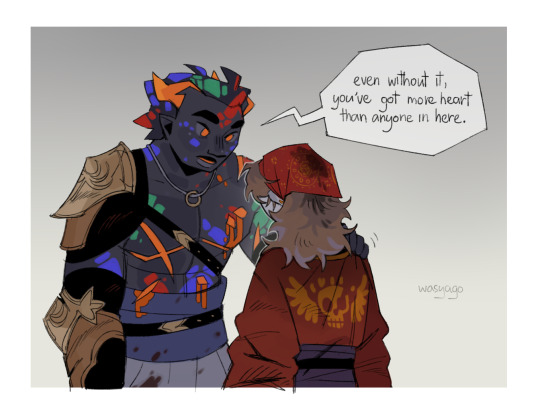
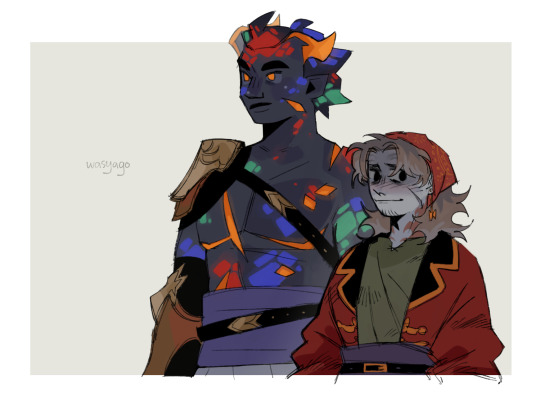
the kind of chemistry these two have is very entertaining
#again. relistening to the black sea arc and these two were so fun from the very beginning. i love their conversations and bickering hehehe#that's the problem i have with watching something in ongoing. i forget literally everything that happens in the previous episode#i need to take notes or something i don't know....#because chip and igneous had a lot of fun moments that i totally forgot about and i was so confused when chip proposed to him#bc to me it felt 'out of nowhere'. they still do only know each other for 2 days so that point stands. but they're not complete strangers#jrwi riptide#jrwi chip#jrwi igneous#jrwi flint and steel#my art#sketch#also igneous is👏big👏#grizzly said he was around 6ft and in my mind it immediately translates to 'a lot bigger than 6ft'
1K notes
·
View notes
Text

911 + Text Posts pt240/?
#911 abc#911#911+text posts#eddie diaz#also gunna tag as#evan buckley#buddie#911 incorrect quotes#Eddie about Buck#the ongoing debate as if we can class buck as a blonde but still
653 notes
·
View notes
Text
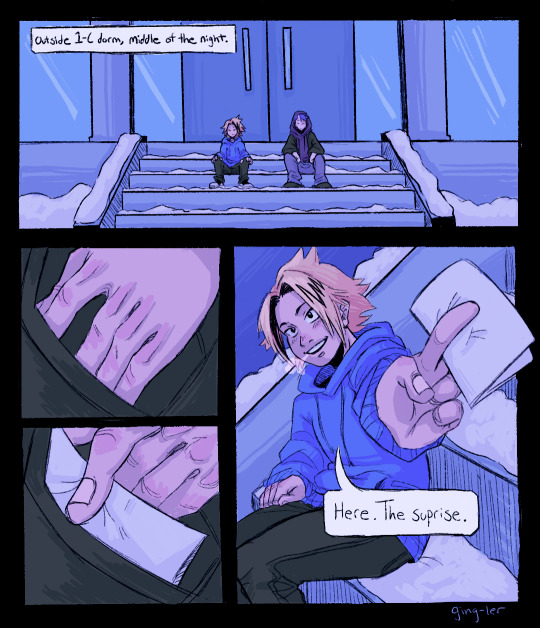


drew a lil comic for probably my favorite shinkami scene ever from the fic Sunflower | Lilac by altering. This fic is AMAZING and if you are a fan of shinkami you must read it immediately!
#shinkami#kamishin#bnha#mha#my art#gingart#this scene is from chapter 6 specifically if anyone was wondering#but read the whole thing anyway lol#its still ongoing but i dont CARE ill wait patiently for updates its so worth it
3K notes
·
View notes
Text
Note: Reasons to Be Cheerful has had weirdly huge formatting issues for the past six or so months, so if that version is a mess, this link should work better.
"Florida Power & Light Company (FPL), the Sunshine State’s largest power utility, employs all the people you might expect: electricians, lineworkers, mechanical engineers — and a few you might not. For over 40 years, the company has kept a team of wildlife biologists on staff. Their task? Monitoring the giant carnivorous reptiles that reside in one of the state’s nuclear power plants.
Saving the American Crocodile
What sounds like a low-budget creature feature is actually a wildly successful conservation story. It goes like this: In 1975, the shy and reclusive American crocodile was facing extinction. Over-hunting and habitat decline caused by encroaching development had pushed its numbers to a record low. By 1975, when it was listed as endangered under the Endangered Species Act, there were only 200 to 300 left.
Three years later, in 1978, workers at the Turkey Point nuclear power plant in Homestead, Florida happened upon something that must have made them gasp: a crocodile nest along one of the plant’s 5,900-acre “cooling canals.” Rather than drive the crocs away — perhaps the easiest solution — FPL hired a team of biologists and implemented a Crocodile Management Plan. Its goal was unconventional: provide a suitable habitat for the crocs within the workings of the nuclear power plant, allowing both to coexist.
Over the course of the next 30 years, FPL’s wildlife biologists monitored nests, tagged hatchlings and generally created a hospitable environment for the reptiles. As it turned out, the plant’s cooling canals provided an ideal habitat: drained earth that never floods on which to lay eggs directly adjacent to water. Over the years, more and more crocs made the cooling canals home. By 1985, the nests at Turkey Point were responsible for 10 percent of American crocodile hatchlings in South Florida. In 2007, the U.S. Fish and Wildlife Service downgraded the American crocodile’s status from endangered to threatened, singling out FPL for its efforts.
The program continues to this day. To date, biologists have tagged some 7,000 babies born at the plant. In 2021, there were a record-setting 565 crocodile hatchlings at the Turkey Point facility.
"Reconciliation Ecology"
Turkey Point’s efforts are an example of what is known in the conservation world as “reconciliation ecology.” Rather than create separate areas where nature or animals can thrive in isolation from humans, reconciliation ecology suggests that we can blend the rich natural world with the world of human activity. Michael Rosenzweig, an emeritus professor of ecology and evolutionary biology at the University of Arizona, was a leading force in establishing this concept. The author of Win-Win Ecology: How the Earth’s Species can Survive in the Midst of Human Enterprise, Rosenzweig has pointed out that although human encroachment has typically been considered a threat to biodiversity, the notion that the world must be either “holy” or “profane,” ecologically speaking, is simply not true.
“In addition to its primary value as a conservation tool, reconciliation ecology offers a valuable social byproduct,” writes Rosenzweig in his first chapter. “It promises to reduce the endless bickering and legal wrangling that characterize environmental issues today.”
-via Reasons to Be Cheerful, May 5, 2022. Article continues below. All headings added by me for added readability.
Dr. Madhusudan Katti, an associate professor in the Department of Forestry and Environmental Resources at North Carolina State University, was inspired by Rosenzweig when he did his postdoc at Arizona State. Katti has now been in the field of reconciliation ecology for two decades and teaches classes on the subject. “To me it’s finding solutions to reconciling human development with biodiversity conservation,” Katti says.
This common ground between development and conservation can be consciously planned, like FPL managing a crocodile habitat at a nuclear power plant or the state-sponsored vertical gardens and commercial farms on high-rise buildings in Singapore. Other examples include the restoration of the coral reef around an undersea restaurant in Eilat, Israel, or recent legislation in New York City requiring patterned glass on high-rise buildings, making windows more visible to migratory birds. Other planned examples of reconciliation ecology can be more individually scaled: a rooftop garden in an urban setting, modifying your garden to earn a “backyard bird habitat” certification from the Audubon Society, or even just mowing your lawn less often...
Reconciliation Ecology: Nature's Already Doing It Without Us
But there are countless examples of “accidental” incidents of reconciliation ecology, as well. One of Katti’s favorites is the kit fox of California’s San Joaquin Valley. “The kit fox was one of the very first species listed on the Endangered Species Act,” Katti says. Its decline was caused by habitat loss through agricultural and industrial development, as well as the extermination of the gray wolf population, which led to an increase in coyotes. So kit foxes adapted and moved to new habitats. One of these was the city of Bakersfield, California.
“Bakersfield, surrounded by oil pumps, would be the last place you’d expect to find an endangered species,” Katti says. But researchers think kit foxes have migrated to Bakersfield because they actually have more protection there from predators like coyotes and bobcats. “The kit foxes have figured out that if they can tolerate the human disturbance and live with people, then they are safer from all these other predators,” he says.
Living in the city has led to some interesting behavioral changes. In the wild, for instance, a female kit fox gives birth to her young and raises them by herself in a den. But in the city, researchers have observed multiple females raising their litters together in the same den. “It’s like a form of cooperative breeding,” Katti says. “That wouldn’t happen in the wild.” ...
The Big Picture: How We Think about Conservation
Reconciliation Ecology isn’t just we humans welcoming animals like crocodiles and foxes into our environments, though. It’s also living with nature in a way that most Western societies haven’t done since the Enlightenment. “In recent years, there’s been a recognition that the ‘fortress conservation’ model — keeping nature separated from humans and not thinking of or valuing human-inhabited landscapes — those ideas are outdated,” says Katti.
In fact, in Katti’s classes on reconciliation ecology, he embraces the notion of reconnecting people with their land if they have been unjustly separated from it. “The term reconciliation also applies to all the colonial legacies where both nature and people have been harmed,” Katti says. “For Indigenous communities, the harm done to ecosystems, it’s happened together. So you can talk about addressing both. That’s where a lot of my thinking is at the moment.”
A hopeful version of this sort of reconciliation is happening in California where colleagues of Katti’s who are tribal members are re-introducing “tribal burns” in some areas. Controlled burns have been a part of many Indigenous cultures for millenia, both as a way to prevent devastating forest fires, but also to encourage the growth of certain plants like hazel that are used for basket-weaving and other crafts.
“The notion that people don’t belong there and ‘let nature take care of itself’ doesn’t really work,” Katti says. “That’s the legacy of Western European Enlightenment thinking — a divide between human and nature. That is a real faulty view of nature. People have been part of the ecosystem forever.”
-via Reasons to Be Cheerful, May 5, 2022
#a bit older but still ongoing/relevant and still very cool#florida#crocodile#reptile#ecology#environment#sustainability#endangered species#united states#california#kit fox#nuclear power plant#reconciliation#colonialism#the enlightenment#conservation#human beings#good news#hope#urban ecology
1K notes
·
View notes
Text
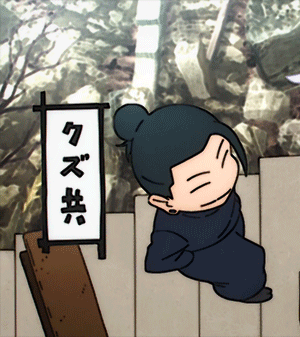
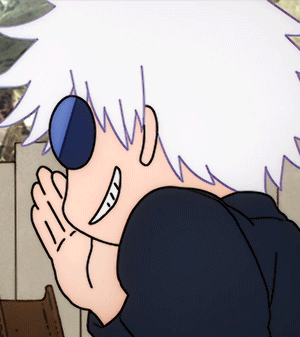
Jujutsu Kaisen (2020-)
#jujutsu kaisen#geto suguru#gojo satoru#finally watching s2. what do you mean its still ongoing i waited 6 months.#my wretched little meow meows my silly cootiepoos.#jjkedit#gif
556 notes
·
View notes
Text

Stop. Just stop.
You're pissing off the entire Kirby community.
Sending me a message saying that you're leaving Tumblr forever and then sending me this 10 hours later is not convincing. I'm not stupid.
Grow up. Get out.
Anyways, just a PSA to my followers that are also Kirby bloggers that this guy may try to get into your good graces by sending you DMs with a sob story saying they're leaving Tumblr or hope that everybody forgot what they did to my pal Ferah and try to get art from other people.
This is not a good person. Block them on sight.
#sorry that this is still ongoing but what this person has done is not ok and has no place in our community#i just want yall to be aware and safe#not art#psa#important#kirby#i dont want to give this guy any more attention after this but just let it be known#theyre atill out there hounding other kirby artists
482 notes
·
View notes
Text

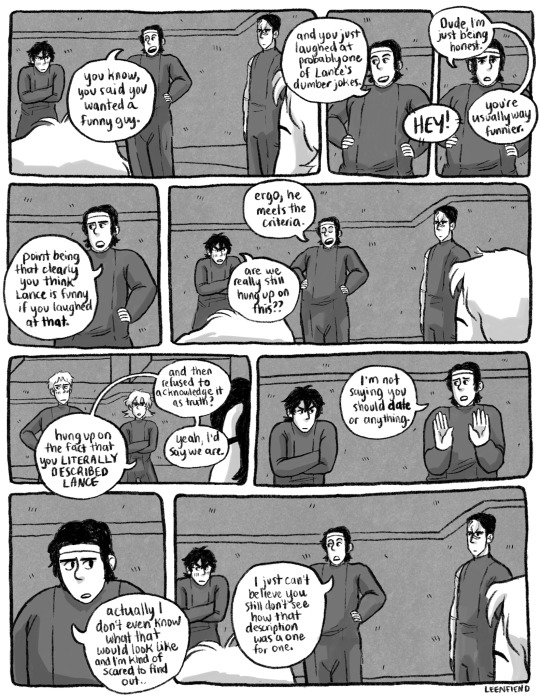
what’s ur type
first < prev next >
full comic
#sorry for everyone who’s been reblogging the full comic post and thinks it’s over im cursing you with more#im still only like … 3k into this 10k fic#and i haven’t finished editing it still#whomp whomp#also job stuff is all okay again!!#in case u were curious about the ongoings of my life#Klance#vld#my art#what’s ur type#wut
1K notes
·
View notes
Text

the cover of my comic based on the song ivy by taylor swift ✿
(prints)
#it's still ongoing!! there's one page left and maybe a couple of extras#also there's a sale on inprnt until sunday so all my prints are 15% off rn~ all the ivy pages are up as individual prints#ivy comic mimimar#ivy comic#ivy#willow#lesbian#sapphic#wlw#lesbian art#sapphic art#wlw art#artists on tumblr#purple#green#illustration#illo#taylor swift#ivy taylor swift
357 notes
·
View notes
Text
transformers synergized sneak peak
page 13, no context

#criticism welcome#sparkplug#spike witwicky#sparkplug witwicky#transformers fan continuity#transformers#tfs#transformers synergize#art post#update#chapter 1 dose have a lot of human focus but bots do play a role#chapter 2 is more bot focused#spike is a dumbass but he means well#maccadam#didnt make much progress last week because i had the flu but im making progress this week#15 pages are fully completed 5 pages are ongoing wips the rest are still either in sketch or thumbnail stage#i wanted to share one my most mundane pages so people dont get to exited lol
188 notes
·
View notes